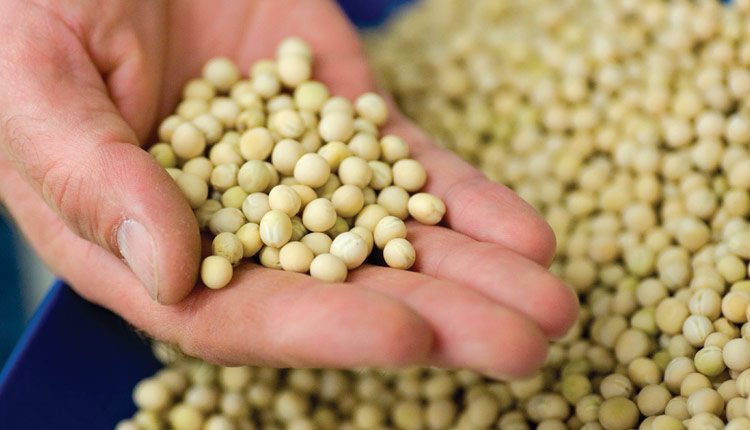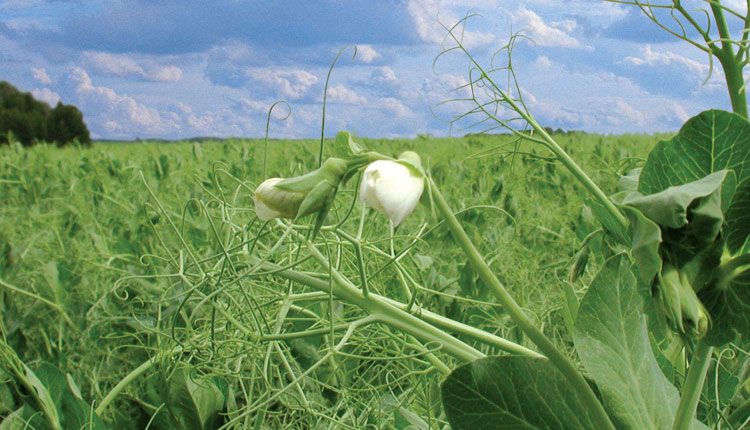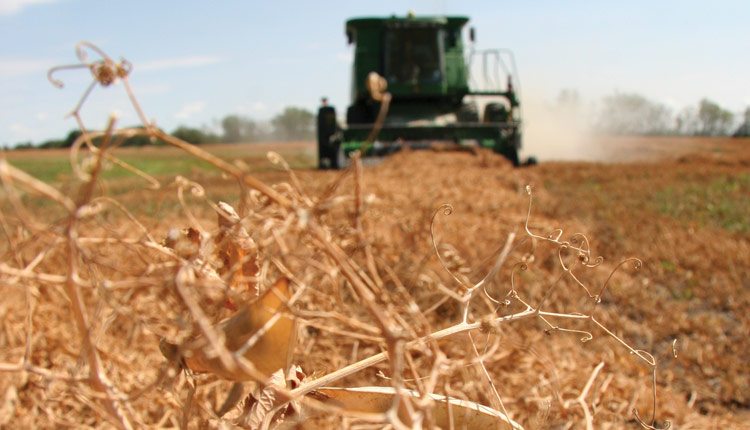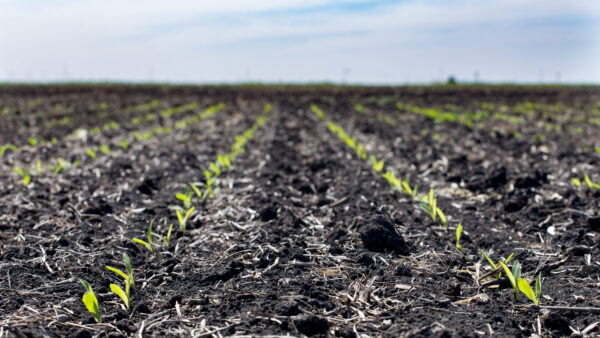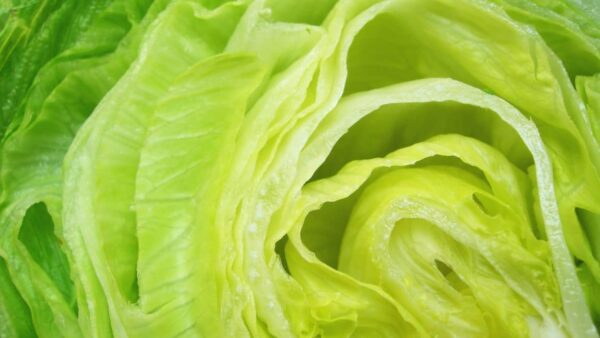Gluten-free and easily consumed by nearly everyone, pulse crops are finding a market.
The world’s pulse crop industry is looking forward to 2016, declared by the United Nations as the International Year of Pulses. This designation is meant to increase awareness of pulses and to position them on the world stage as a primary source of protein and other essential nutrients.
“The 2016 IYOP will promote broad discussion and cooperation at the national, regional and global levels to increase awareness and understanding of the challenges faced by pulse farmers, be they large scale farms or small landholders,” according to the official IYOP website.
Pulses — a category of crops that includes, dry peas and beans, lentils and chickpeas — are high in protein, fiber and various vitamins; provide amino acids; and are hearty crops. They are most popular in developing countries, but are increasingly becoming recognized as an excellent part of a healthy diet throughout the world.
That’s exciting to people like Andy Bury, president of the British Edible Pulses Association (BEPA). The association announced that the United Kingdom’s total amount of spring pulses grown in 2015 will likely increase as growers turn to beans and peas to meet new EU agricultural requirements, manage blackgrass and mitigate falling oilseed rape prices.
“Some commentators are expressing the view that increased acreage will put downward pressure on prices, but that should not be a concern. Prices will be slightly lower, but there will still be a substantial premium over wheat,” Bury says. “The significant advantage is that this will bring more buyers into the market and increasing demand will bring new opportunities for growers.”
Like in other parts of the globe, pulses play an important role in the U.K. feed industry, used heavily in livestock diets for pigs, poultry and cattle, as well as for pet food and for aquaculture. The key value of pulses in animal feed comes from their amino acids and from the energy supplied by carbohydrates.
They’re also a major food staple in the domestic and international markets in the U.K. Pulses are used as an ingredient in a variety of foods such as soups. The also form the base of traditional dishes in major pulse-consuming nations, such as India — the world’s biggest producer of pulses.
Export Demand
Unlike many major pulse-growing nations, such as the Canada and the United States, India consumes the majority of the pulses it grows, shares Jackie Tenuta, Pulse Canada director of market development. It has to import the rest. This presents opportunities for the North American pulse industry to grow its exports.
Canada is a world leader in the production and export of pulse crops, the Canadian Agri-Food Trade Alliance notes. It’s the world’s biggest exporter of pulses. In 2012, Canada exported 3.4 million tonnes of pulses worth more than $1.8 billion and exports its pulses to more than 120 countries. Canada’s largest pulse export markets are India (27 percent), China (13 percent), the U.S. (8 percent), Bangladesh (6 percent) and Turkey (4.4 percent).
With a healthy export market to the developing world, Pulse Canada is attempting to diversify its pulse market opportunities and get more consumers in the developed world eating the nutritious crop, Tenuta says. It also wants to grow its domestic market.
“The U.S. and Canada have fairly low pulse consumption. The focus for us has been on increasing consumption in processed food as an ingredient. We see that as the next big demand push for our industry,” she says. “From a marketing perspective, we see the next frontier being the incorporation of pulses into more processed foods and increasing marketing potential in developed countries like the U.S. and European countries.”
Byron Lannoye, general manager for seed company Pulse USA in North Dakota, agrees that domestic demand for pulses will only rise. “I think domestic demand will provide a stable base for the market,” he says. “As pulse crops get introduced to the domestic food markets, if it continues to increase like it is now, we will more than likely have trouble supplying the demand if we can consume the products we produce within our own states and provinces.”
The popularity of foods like hummus is creating demand for chickpeas in the United States. The latest U.S. Farm Bill includes two provisions intended to boost consumption of pulses including chickpeas, peas and lentils. Pulses are a growing American industry, Lannoye notes.
“Pulse crops will continue to grow in demand among domestic markets in the U.S. and Canada. There’s a reason they’ve been called the ‘perfect food,’” he says.
Not only are they highly nutritious (they also happen to be gluten-free, something a growing number of consumers look for in light of the popularity of gluten-free diets), they’re also a blessing for growers. Pulse Canada notes that pulse crops “use less water and can tolerate drought stress better than crops like wheat or canola. Pulse crops also use water in a different way than other crops grown in rotation, extracting water from a shallower depth, leaving more water deep in the soil for the following year’s cereal or oilseed crop. The water use characteristics of pulse crops effectively increases the water use efficiency of the entire crop rotation.”
“Pulses are nitrogen-fixing crops, and less energy is needed to grow them, so they produce fewer greenhouse gas emissions,” Tenuta adds. “Soil health is improved as a result.”
Future of Pulses
As pulse demand grows, new varieties are being developed to accommodate that increased demand.
“There’s good work being done on wet rot on peas. With the wet weather that pulse growing areas can get, we’ve had more problems with that,” Lannoye says. “We’re working to get varieties that are resistant to both strains of wet rot. That’s a big deal for us.”
Agriculture and Agri-Food Canada (AAFC) researchers and their collaborators in six provinces have made significant contributions to pulse crop research and innovation in Canada. Research areas include breeding and genetic enhancement. Research has been carried out into new varieties that resist lodging and disease or have a shorter growing season, AAFC notes. AAFC, the University of Saskatchewan and University of Guelph developed the majority of new pulse varieties in Canada.
It’s not just Canada that’s developing new pulse varieties. Two new varieties of chickpea developed by researchers at the University of Western Australia (UWA) “are expected to take the Indian market by storm and turn the tide for an industry that has struggled to recover from a devastating disease that first hit the Western Australian crop in 1999,” according to UWA.
Ambar is an early flowering variety that gives competitive yields and has a high degree of ascochyta blight resistance. Neelam is a mid-flowering variety with a wide adaptation and has given outstanding grain yields at trials in Western Australia, South Australia and Victoria.
“Both Ambar and Neelam’s resistance to the ascochyta blight has been verified in other parts of Australia and India, where pathogen population is much more diverse. As a result, the need for little or no fungicide should significantly cut the cost of production,” UWA reports.


